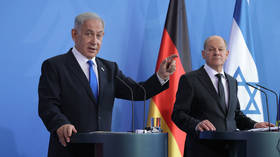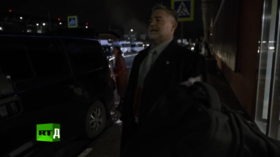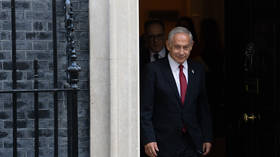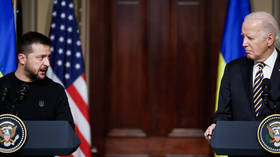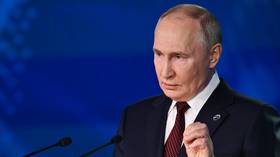Cold War-era Russian nuclear trains could be on track to make return, expert says, sparking fresh fears of confrontation with US

Nuclear trains were once considered a relic of the Cold War, but now the secretive locomotives could be set for a comeback, carrying warheads around Russia, in a move that could set Moscow on a collision course with Washington.
The news is sure to raise hackles in the US, which would see this kind of project as a threat to its missile defense system. In comments carried by the Mosckovsky Komsomolets newspaper on Monday, Alexey Leonkov, a Russian military expert and an editor of the journal Arsenal Otechestva, outlined how a Soviet-era project could be reborn. According to the publication, the deployment of train-based intercontinental ballistic missiles might be the country’s next step amid escalating nuclear tensions with the NATO military bloc. In the USSR era, railway missile networks were developed with the intention of ensuring warheads could be shipped easily around the country and go unnoticed by Western satellites and surveillance flights. By contrast, land-based launchers, and those in underground silos, are far more easily tracked and monitored.
Also on rt.com Nuclear war between US & Russia more likely as Americans ‘share’ bombs with European NATO members – Deputy FM RyabkovAs a result of being difficult to detect, the system became a key area of focus for bilateral negotiations with the US after the fall of the USSR, and the trains were banned under the START II treaty, signed in 2005. However, the New START treaty that replaced it has more limited provisions on mobile missiles, potentially opening the door to the scheme being resurrected.
Last summer, Vladimir Evseev, a strategic weapons specialist and veteran of Russia’s missile forces, told RIA Novosti that he believed the deployment of a new model of railway-based nukes would be “the most effective response to the strategic threat posed by the growth of NATO military bases near Russia’s borders.” He added that, if military chiefs gave the go-ahead, the system could be revived within only three to five years. It had been previously reported that development was underway on the project, but officials were then said to have halted work in 2017.
Tensions between Russia and the West have risen in recent years over warheads stationed near the country’s European borders. In December, Russia’s Deputy Foreign Minister, Sergey Ryabkov, warned that US’ “sharing” of nuclear weapons with NATO members on the continent was escalating the chances of nuclear war. “Obviously, this leads to destabilization,” he said, “in addition, new risks appear and this is a violation of Articles 1 and 2 of the Non-Proliferation Treaty.”
Like this story? Share it with a friend!





